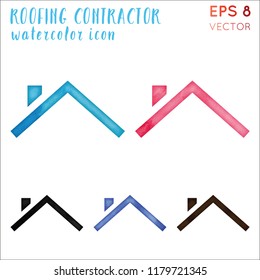Systematic Guide To Setting Up Your Wall Surfaces For Painting
Systematic Guide To Setting Up Your Wall Surfaces For Painting
Blog Article
Uploaded By-Nance Lindberg
When you're prepping your walls for paint, it's important to comply with a systematic procedure to guarantee a remarkable finish. Begin by checking out the wall surface for any kind of damage; this action can make or break your task. When you've determined any concerns, cleaning the surface area effectively is important, as a dirty wall can affect paint bond. After that, you'll need to patch any kind of imperfections and apply a primer. But there are specific techniques and pointers that can boost your preparation video game-- let's discover those further to achieve the most effective outcomes.
Assessing Wall Condition
Prior to you order your paintbrush, take a moment to examine your wall surfaces' problem. Look for https://www.housebeautiful.com/room-decorating/colors/g40868124/wall-painting-ideas/ of visible damages like cracks, holes, or peeling off paint. These imperfections can influence exactly how the paint adheres and looks when it's dry. If you observe any type of substantial damages, you'll need to prioritize fixings prior to diving into painting.
Look very closely at the texture of your walls. Is the surface area smooth, or is there structure that might call for unique factor to consider? Smooth wall surfaces generally need much less prep, while textured surface areas might need more time to repaint equally.
Additionally, take into consideration the previous paint task. If the old paint is shiny, it mightn't allow new paint to stick effectively. You'll would like to know if your walls have been painted with oil-based or water-based paint, as this can influence your choice of guide or paint.
Finally, keep in mind of any wetness concerns. If you see signs of water damages or mold, address these issues right away to avoid more difficulties.
Cleansing the Surface area
When you've assessed the problem of your walls, the following step is cleansing the surface area. Start by collecting your supplies: a container, cozy water, a moderate detergent, a sponge or towel, and a scrub brush for harder places.
Begin at the top edge of the wall surface and work your method down. Mix the cleaning agent with cozy water in your bucket, then dip the sponge or fabric right into the solution. Wring commercial painter out to avoid too much dampness on the wall surfaces.
As you clean, pay attention to locations that could've gathered dust, oil, or fingerprints. For persistent discolorations, utilize the scrub brush gently to avoid damaging the paint beneath. Wash your sponge or cloth regularly in clean water to avoid spreading dust around.
After cleaning, it's essential to wipe the wall surfaces with a wet towel to remove any soap residue. This action makes certain a smooth surface for the brand-new paint to abide by.
Permit the wall surfaces to dry completely before carrying on to the next prep work actions. This thorough cleansing procedure will certainly aid develop a fresh canvas for your painting job, making sure the most effective results.
Patching and Priming
Patching and priming are critical action in preparing your wall surfaces for a fresh coat of paint. Initially, inspect your walls for any kind of openings, splits, or imperfections. Make use of a high-grade spackling substance or patching paste to load these areas.
Apply the substance with a putty knife, smoothing it out so it's flush with the surrounding surface. Enable it to dry completely, and then sand it gently until it's smooth and even.
As soon as you've covered every little thing, it's time to prime. Primer assists secure the covered locations, making certain the paint adheres appropriately and offers a consistent surface. Choose a guide appropriate for your wall surface kind and the paint you'll be making use of.
Apply the guide using a roller for bigger areas and a brush for edges and edges. If your covered locations are considerably huge or permeable, you might wish to use a 2nd layer of guide after the initial one dries out.
After priming, let whatever completely dry completely prior to carrying on to painting. This preparation won't only enhance the look of your walls yet additionally lengthen the life of your paint job.
Take your time, and you'll be pleased with the results.
Conclusion
By complying with these straightforward steps, you can attain a smooth and specialist coating on your wall surfaces. Begin by analyzing their problem, then clean and spot any type of blemishes prior to applying primer. Remember to allow appropriate drying time and make sure whatever is smooth prior to you study painting. With the right preparation, you'll set the stage for a lovely improvement in your area. Currently, gather your supplies, breathe in the fresh air, and prepare yourself to paint!
